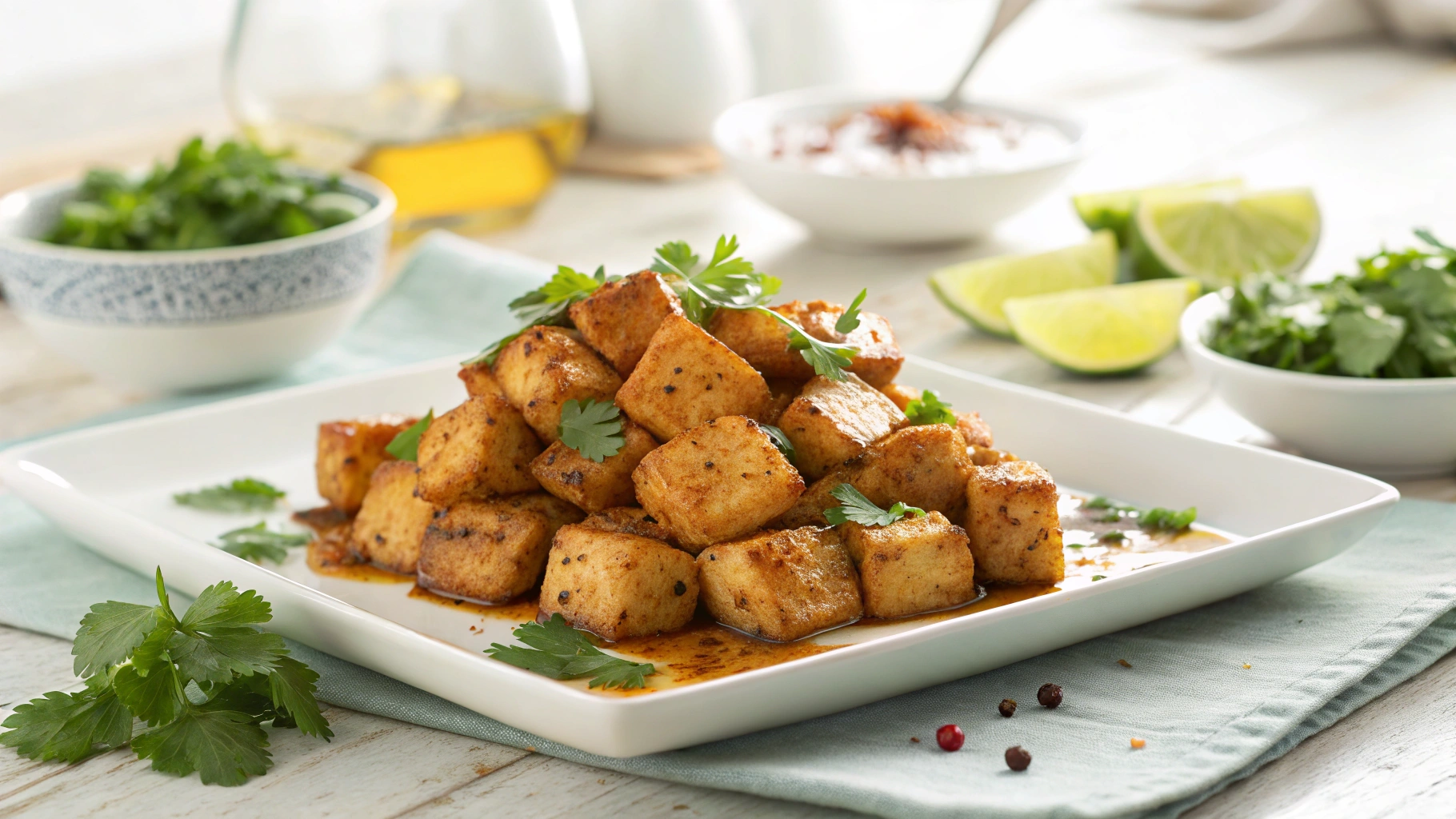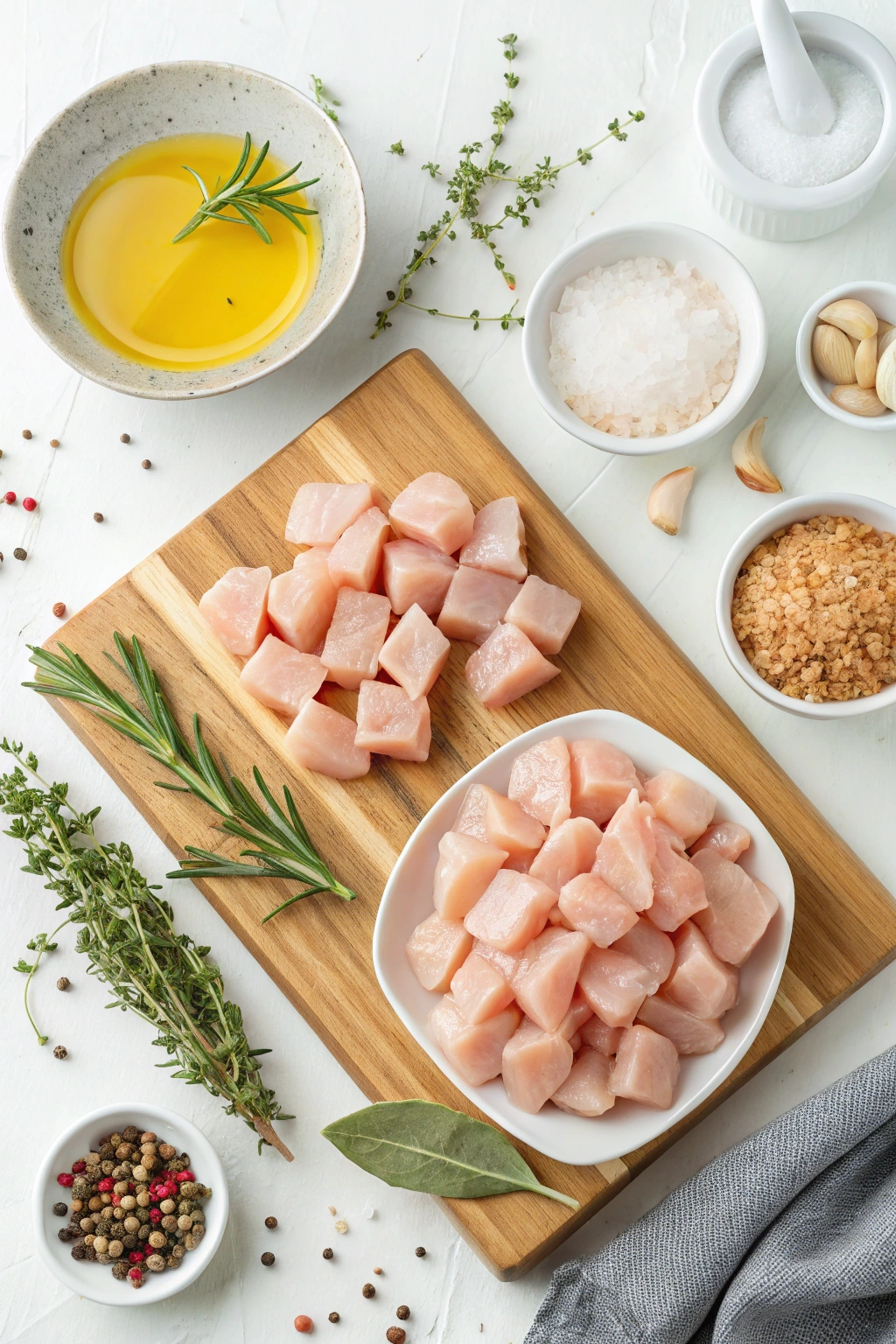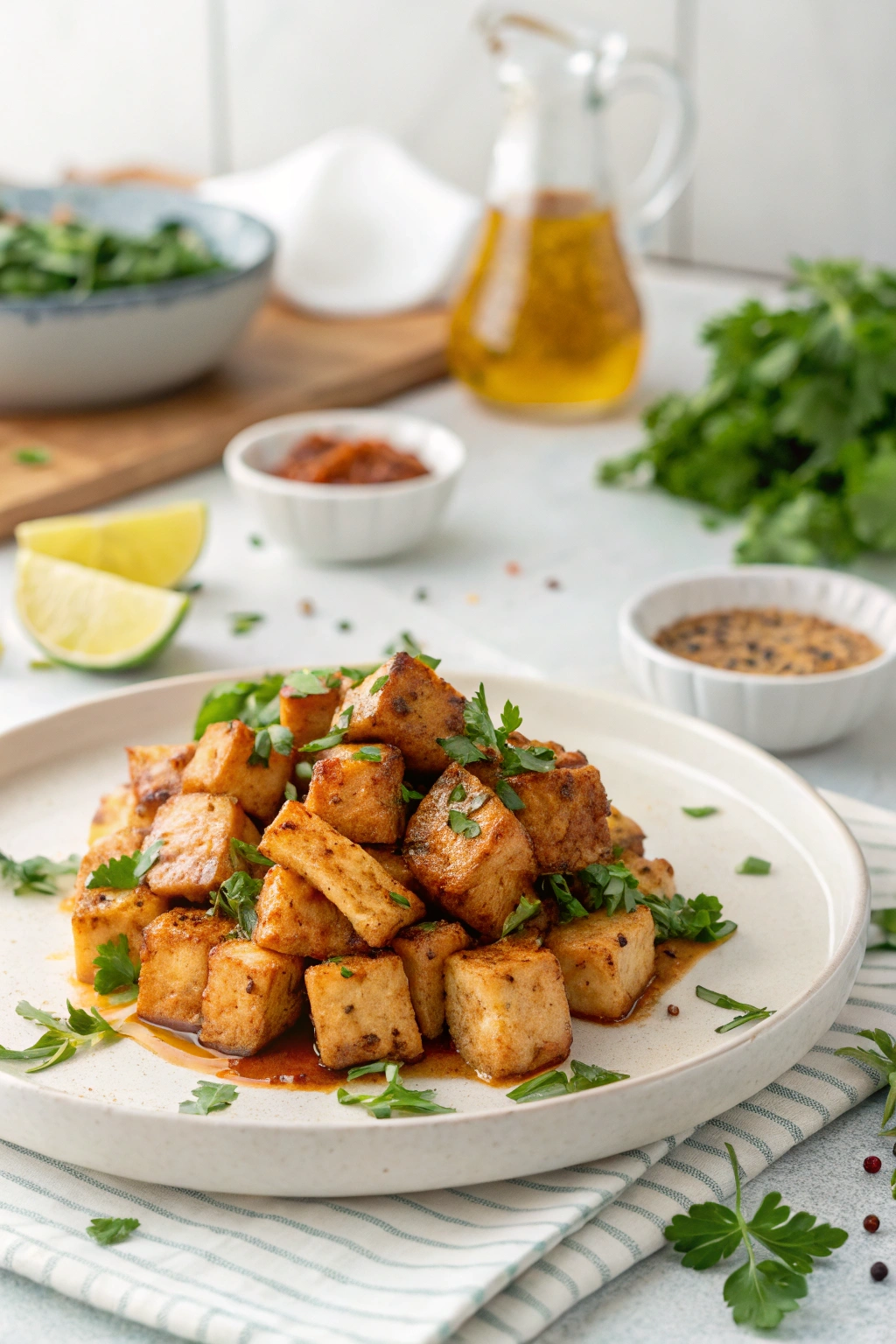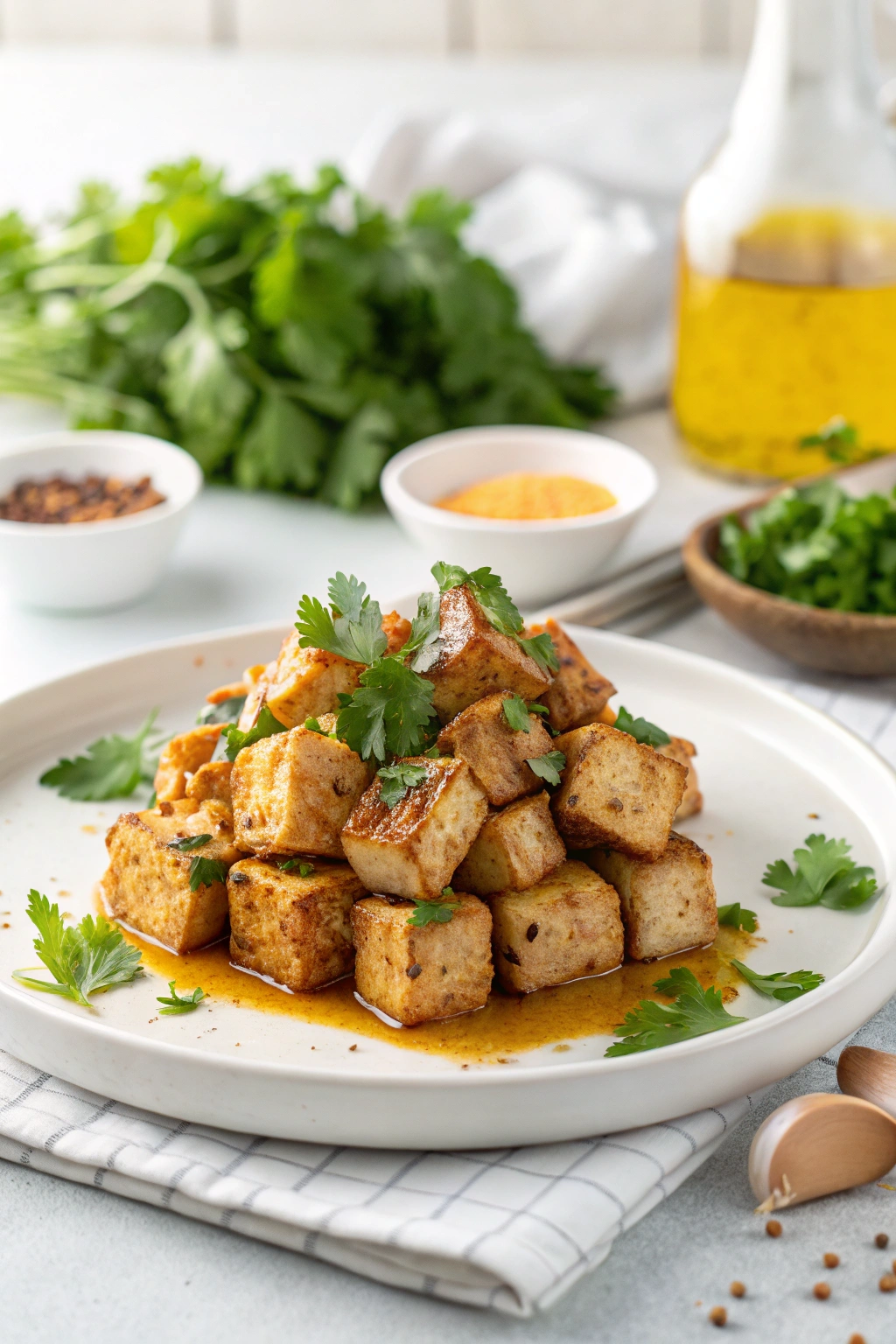How to Cook Cubed Chicken: 10 Easy Chicken Recipes

Did you know that the average home cook wastes 23% of their chicken purchases due to inefficient preparation methods? Mastering how to cook cubed chicken not only minimizes waste but also opens the door to countless quick, versatile, and delicious meal options. Whether you’re a busy parent looking for speedy weeknight dinners or a meal prep enthusiast seeking protein-packed options, learning how to cook cubed chicken efficiently can revolutionize your kitchen routine. In this comprehensive guide, we’ll explore the most effective techniques and share 10 mouthwatering recipes that showcase just how versatile cubed chicken can be.
cubed chicken
Have you ever wondered why restaurant chicken dishes often taste more flavorful and tender than homemade versions? The secret often lies in how the chicken is prepared before cooking. When you learn how to cook cubed chicken properly, you’ll discover that this simple preparation method creates the perfect foundation for absorbing flavors while ensuring quick, even cooking. Unlike cooking whole chicken breasts or thighs, cubed chicken cooks in a fraction of the time, making it ideal for busy weeknights when time is limited but flavor expectations remain high.
Cubed chicken is incredibly versatile – it works beautifully in stir-fries, pasta dishes, salads, soups, and countless other applications. By mastering a few fundamental techniques for how to cook cubed chicken, you’ll expand your culinary repertoire and always have a reliable protein option at your fingertips.
Ingredients List
Before diving into specific recipes, let’s cover the basic ingredients needed for perfectly cooked cubed chicken:
- 2 pounds boneless, skinless chicken breasts or thighs (thighs offer more flavor and moisture, while breasts provide a leaner option)
- 2 tablespoons high-heat cooking oil (avocado, grapeseed, or refined coconut oil work well)
- 1 teaspoon kosher salt (or ½ teaspoon table salt)
- ½ teaspoon freshly ground black pepper
- 1 teaspoon garlic powder (fresh minced garlic can be substituted for more aromatic results)
- 1 teaspoon onion powder
- Optional: 1 tablespoon cornstarch (for extra crispy exterior)
- Optional: ½ teaspoon paprika (adds color and mild flavor)
- Optional: ¼ teaspoon cayenne pepper (for heat lovers)
Substitution options:
- Allergic to garlic? Try using ginger powder or more onion powder instead.
- Need a lower-sodium option? Replace salt with a salt-free herb blend and a squeeze of lemon.
- For a Mediterranean twist, substitute the spices with dried oregano, thyme, and a touch of lemon zest.
- For an Asian-inspired flavor profile, swap the spices for five-spice powder, a touch of sesame oil, and ginger.
Timing
Understanding timing is crucial when learning how to cook cubed chicken. Proper timing ensures juicy, tender results rather than dry, overcooked meat.
- Preparation time: 10-15 minutes (including cutting chicken into cubes)
- Cooking time: 8-12 minutes (25% faster than cooking whole chicken breasts)
- Total time: 20-25 minutes
Interestingly, cubed chicken cooks approximately 60% faster than bone-in chicken pieces, making it one of the most efficient proteins to prepare. This time efficiency doesn’t compromise flavor—in fact, the increased surface area of cubed chicken allows for better flavor absorption compared to larger cuts.
Step-by-Step Instructions

Step 1: Prepare Your Cutting Surface
Start with a clean cutting board designated for raw poultry to prevent cross-contamination. Pro tip: Place a damp paper towel under your cutting board to prevent it from sliding around, giving you better control for more uniform cubes.
Step 2: Trim and Cube the Chicken
Remove any visible fat or tendon pieces from your chicken. For even cooking, aim for uniform cubes measuring approximately ¾ to 1 inch per side. If your chicken breasts are partially frozen (about 20 minutes in the freezer), they’ll be firmer and easier to cut into precise cubes.
Step 3: Season the Chicken
Place your cubed chicken in a mixing bowl and add salt, pepper, and your chosen seasonings. Use your hands (with food-safe gloves if preferred) to toss the chicken, ensuring each piece is evenly coated. Allow the seasoned chicken to rest for 5-10 minutes at room temperature to absorb flavors.
Step 4: Prepare Your Cooking Surface
Heat your pan or skillet over medium-high heat. The ideal pan for how to cook cubed chicken is a heavy-bottomed skillet or cast-iron pan that retains heat well. Add your chosen high-heat oil and allow it to become hot but not smoking—you should see subtle rippling on the surface.
Step 5: Cook the Chicken
Add the seasoned chicken cubes to the hot pan in a single layer, making sure not to overcrowd. Depending on your pan size, you might need to cook in batches. Overcrowding causes the chicken to steam rather than sear, resulting in less flavorful results.
Step 6: Achieve the Perfect Sear
Allow the chicken to cook undisturbed for 2-3 minutes until a golden crust forms on the bottom. This initial sear locks in juices and develops flavor through the Maillard reaction, which creates hundreds of new flavor compounds.
Step 7: Complete the Cooking Process
Once seared on the first side, stir or flip the chicken cubes to cook all sides. Continue cooking for another 4-6 minutes, stirring occasionally, until the chicken is cooked through with no pink remaining. The internal temperature should reach 165°F (74°C).
Step 8: Rest Before Serving
Transfer the cooked chicken to a plate and allow it to rest for 2-3 minutes before incorporating into your recipe. This resting period allows juices to redistribute throughout the meat, resulting in more tender, flavorful chicken.

Nutritional Information
Understanding the nutritional profile of cubed chicken helps you make informed dietary choices. Here’s the breakdown for a 4-ounce (113g) serving of cooked cubed chicken breast:
| Nutrient | Amount | % Daily Value* |
| Calories | 165 | 8% |
| Protein | 31g | 62% |
| Fat | 3.6g | 5% |
| Saturated Fat | 1g | 5% |
| Carbohydrates | 0g | 0% |
| Fiber | 0g | 0% |
| Sugar | 0g | 0% |
| Sodium | 75mg | 3% |
| Potassium | 255mg | 7% |
| Iron | 0.9mg | 5% |
*Based on a 2,000 calorie diet
Cubed chicken thighs will contain approximately 40% more calories and triple the fat content, but also provide more iron and zinc than breast meat. Studies show that chicken provides complete protein with all nine essential amino acids, making it an excellent option for muscle maintenance and growth.
Healthier Alternatives for the Recipe
While basic cubed chicken is already a nutritious protein option, here are some modifications to enhance its health benefits:
- Air fryer method: Reduce oil by 75% by cooking seasoned cubed chicken in an air fryer at 380°F for 10-12 minutes, shaking the basket halfway through.
- Baked alternative: Spread cubed chicken on a parchment-lined baking sheet and bake at 425°F for 12-15 minutes for a hands-off cooking approach that uses minimal oil.
- Marinate in yogurt: Soak chicken cubes in a mixture of Greek yogurt, lemon juice, and spices for 30 minutes before cooking to tenderize the meat while adding probiotics and reducing the need for oil.
- Plant-based seasonings: Incorporate turmeric, which contains curcumin with anti-inflammatory properties, along with herbs like rosemary and oregano that are rich in antioxidants.
- Sodium reduction: Use herbs, citrus zest, and vinegars to flavor chicken instead of salt, reducing sodium content by up to 70%.
For those following specific diets, cubed chicken easily adapts to keto, paleo, Whole30, and most other nutritional approaches with simple modifications to seasoning and cooking methods.
Serving Suggestions
Once you’ve mastered how to cook cubed chicken, these creative serving ideas will help you create memorable meals:
- Grain bowls: Serve cubed chicken over quinoa, brown rice, or farro with roasted vegetables and a tahini drizzle for a balanced meal (try our delicious Chicken Rice Bowl recipe).
- Hearty salads: Add warm or chilled cubed chicken to salads with mixed greens, cherry tomatoes, cucumber, and avocado for a protein-rich lunch option.
- Pasta perfection: Toss with whole grain pasta, olive oil, garlic, and vegetables for a quick dinner (our Chicken Bacon Ranch Pasta is always a hit).
- Wrap it up: Create satisfying wraps with whole grain tortillas, cubed chicken, and colorful vegetables (check out our Chicken Wraps for inspiration).
- Soup enhancer: Add to homemade or store-bought soups in the last few minutes of cooking for an easy protein boost (our Gluten-Free Chicken Soup is perfect for this).
- Stir-fry star: Combine with colorful vegetables and a light sauce over rice or noodles for a quick Asian-inspired meal (try our Chicken Ramen Stir Fry).
For family-style serving, consider a “build-your-own” station where everyone can customize their meal with various toppings, sauces, and bases, making the humble cubed chicken the star of an interactive dining experience.
Common Mistakes to Avoid
When learning how to cook cubed chicken, watch out for these common pitfalls:
- Inconsistent cube size: Varying sizes lead to uneven cooking—some pieces overdone while others remain undercooked. Use a sharp knife and take your time to create uniform pieces.
- Overcrowding the pan: Data shows that chicken cubes need at least ¼ inch of space between pieces to properly sear. Cook in batches if necessary—the extra few minutes are worth the improved flavor and texture.
- Using the wrong heat level: Too high heat chars the outside before the inside cooks; too low prevents proper browning. Medium-high heat is ideal for most stovetops.
- Constant stirring: Moving the chicken too frequently prevents proper browning. Allow it to develop a crust before flipping or stirring.
- Overlooking food safety: Always wash hands and surfaces after handling raw chicken. Use a meat thermometer to ensure chicken reaches 165°F (74°C) internal temperature.
- Skipping the rest period: Not allowing the cooked chicken to rest for a few minutes results in moisture loss when cut. A 2-3 minute rest makes a noticeable difference.
- Under-seasoning: Chicken requires proper seasoning. Season both before cooking and adjust after cooking if necessary.
- Using old spices: Spices lose potency over time. If your spices are over 6 months old, you might need to use more to achieve the same flavor impact.
Storing Tips for the Recipe
Proper storage extends the life of your cooked cubed chicken and maintains its quality:
- Refrigeration: Store cooked cubed chicken in airtight containers in the refrigerator for up to 4 days. Cool completely before refrigerating to prevent bacterial growth.
- Freezing: For longer storage, freeze cooked cubed chicken in freezer-safe containers or bags for up to 3 months. For best quality, use vacuum-sealed bags which reduce freezer burn by 85% compared to regular storage bags.
- Portioning: Consider freezing in meal-sized portions for easy defrosting. Add a tablespoon of chicken broth to each container before freezing to help maintain moisture during reheating.
- Thawing: Thaw frozen chicken cubes overnight in the refrigerator for best results. In a pinch, use the defrost setting on your microwave, but be careful not to begin cooking the chicken.
- Reheating: Gently reheat in a covered skillet with a splash of water or broth to maintain moisture. Microwave reheating should be done at 70% power with a damp paper towel covering the chicken to prevent drying.
- Meal prep: Cooked cubed chicken is ideal for meal prep. Cook a large batch once and incorporate into different meals throughout the week for efficiency.

10 Easy Cubed Chicken Recipes
Now that you’ve mastered how to cook cubed chicken, here are 10 delicious recipes to put your skills to work:
- Chicken Bites with Honey Garlic Sauce – Tender cubed chicken glazed with a sweet and savory sauce, perfect for appetizers or a quick protein-packed meal.
- Parmesan Crusted Chicken Cubes – Crispy exterior with juicy interior, these parmesan-coated chicken bites are addictively good.
- Smothered Chicken Skillet – Cubed chicken smothered in a rich gravy with mushrooms and onions, served over mashed potatoes or rice.
- Crack Chicken – An irresistible combination of cubed chicken, cream cheese, ranch seasoning, and bacon that lives up to its addictive name.
- Slow Cooker Chicken and Vegetables – A hands-off approach to cooking cubed chicken with seasonal vegetables for a complete meal.
- Marry Me Chicken Pasta – So good it might inspire a proposal! Cubed chicken in a creamy sun-dried tomato sauce over pasta.
- Simple Chicken and Rice – A comforting classic combining perfectly cooked cubed chicken with fluffy rice and aromatics.
- Baked Chicken Bites – A healthier oven-baked alternative that delivers on flavor while reducing oil.
- Slow Cooker Chicken with Cream Cheese – A creamy, comforting dish that practically cooks itself.
- Crispy Oven-Baked Chicken Chunks – Achieve that satisfying crunch without deep-frying using this clever oven technique.
Conclusion
Mastering how to cook cubed chicken opens up a world of culinary possibilities that combine convenience, nutrition, and exceptional flavor. Whether you’re stir-frying, baking, or simmering these versatile protein pieces, the techniques shared in this guide ensure juicy, tender results every time. From simple weeknight dinners to impressive entertaining options, cubed chicken deserves a prominent place in your cooking repertoire.
We’d love to hear about your experiences cooking cubed chicken! Have you tried any of these recipes or techniques? Share your feedback in the review section or leave a comment on our blog. Don’t forget to subscribe for more delicious recipes and cooking tips delivered straight to your inbox.
FAQs
Q: How do I know when cubed chicken is fully cooked? A: Properly cooked cubed chicken should reach an internal temperature of 165°F (74°C), show no pink in the center, and the juices should run clear. If you don’t have a meat thermometer, cut open the largest cube to check for doneness.
Q: Can I marinate cubed chicken, and if so, for how long? A: Yes! Cubed chicken actually marinates more efficiently than whole pieces, requiring only 30 minutes to 2 hours. Avoid marinating longer than 24 hours, as acidic marinades can break down the protein too much, resulting in mushy texture.
Q: Is it better to use chicken breasts or thighs for cubed chicken recipes? A: It depends on your preference. Chicken breasts are leaner but can dry out more easily, while thighs have more fat, resulting in more flavor and moisture tolerance. For beginners learning how to cook cubed chicken, thighs are more forgiving.
Q: Can I freeze raw cubed chicken? A: Absolutely! Raw cubed chicken freezes well for up to 9 months. Place in freezer-safe bags, removing as much air as possible. Thaw in the refrigerator before cooking for best results.
Q: How can I make cubed chicken more flavorful? A: Beyond basic seasoning, try marinating in yogurt, buttermilk, or a mixture of oil, acid (lemon juice or vinegar), and herbs. Another trick is to finish cooked cubed chicken with a flavor-packed sauce or glaze in the last minute of cooking.
Q: What’s the best way to cook cubed chicken for meal prep? A: Slightly undercook the chicken by about 1 minute when preparing for meal prep, as it will continue cooking when reheated later in the week. This prevents the chicken from becoming tough or dry during reheating.
Q: Can I cook frozen cubed chicken without thawing? A: While possible, it’s not recommended. Cooking frozen cubed chicken directly often results in uneven cooking with overcooked exteriors and potentially undercooked centers. For food safety and quality, thaw before cooking.
Q: Why does my cubed chicken sometimes turn out dry? A: The most common causes are overcooking, using too high heat, or choosing lean cuts like breast meat without proper technique. Try using chicken thighs, brining the chicken before cooking, or using a marinade with some oil to help maintain moisture.
Q: What’s the difference between diced and cubed chicken? A: The terms are often used interchangeably, but technically, diced chicken is cut into smaller pieces (about ¼-½ inch) while cubed chicken is larger (about ¾-1 inch). The cooking techniques remain similar, though smaller pieces cook faster.
Q: Can I cook cubed chicken in an air fryer? A: Yes! Cook at 380°F for 10-12 minutes, shaking the basket halfway through. This method uses less oil while still achieving a satisfying exterior texture. The circulating hot air creates a nice exterior while keeping the inside juicy.
